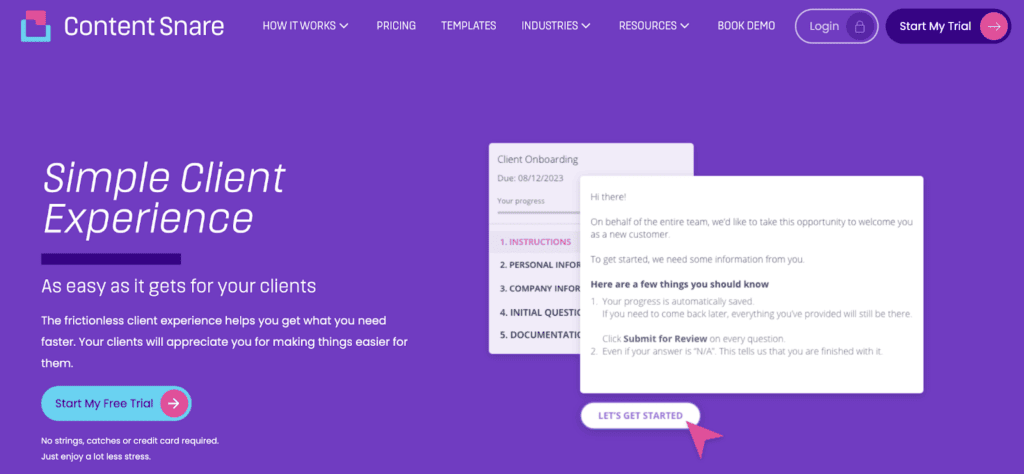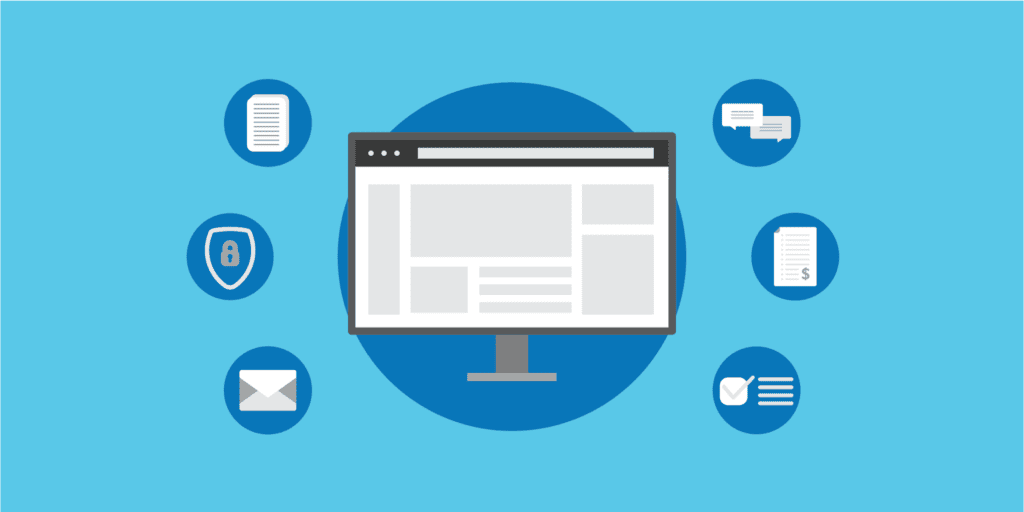Whether you’re an independent accountant, run an advertising agency, or have a career as a real estate agent, you’re probably always thinking of ways to be competitive in your market. A key way to stand out is to improve your client experience.
In this post, we’ll go over why the client experience matters so much and share a few ideas to help you improve different aspects of the customer journey to delight your clients. By following these strategies, you can expect to earn yourself a stellar reputation that will help you attract more leads.
Let’s explore!

What is the customer experience, exactly?
The client experience (or customer experience / CX) encompasses every step of the customer journey that the client goes through when they engage with your business. That includes all their interactions from the first time they connect with you, fill out a form, participate in demos, make a payment, or cancel their subscription.
Why does the client experience matter so much?
This might be stating the obvious, but just consider your own experiences as a customer: a positive experience makes you want to come back for more, while a negative one can quickly send you searching for alternatives.
If you’re more of a stats person, then these stats make their case:
- 52% of clients will switch to a competitor if they have a single negative impression.
- Clients that rate companies with a high customer experience score spend 140% more and remain loyal for up to 6 years.
- 73% of customers now say CX is the number one thing they consider when deciding whether to purchase from a company.
- Customer-centric brands report profits that are 60% higher than those that fail to focus on CX.
All of this proves that investing in CX is worthwhile, no matter what industry you’re operating in or the size of your business.
How to improve the client experience
1. Personalize your communications
The more time you take to get to know your clients, the better you can speak to them and support their needs through every stage of the customer journey. Plus, no client wants to feel like just a number. Take some time to figure out your different buyer personas. You can then tailor your communications and content to each client depending on their preferences and motivations.
For example, you might want to give them customized offers based on the services they last purchased. If you’re a graphic designer who has designed a logo for a happy client, you can present them with a special offer to design an icon pack for them as well.
If you’re a real estate agent who works with first-time homebuyers as well as property investors, you can tailor the content of your email newsletters according to the topics that are of most interest to them.
By personalizing how you communicate with your clients, you demonstrate that you understand them on a personal level. This inevitably leads to better client engagement, satisfaction, and loyalty.
Here’s one example of a personalized email based on order history:

2. Make things easy for your clients
We get so caught up with optimizing processes to help our business run more smoothly that we often forget about what the client experiences on their side.
How easy is it for the client when it comes to paying their invoices, changing their plan, or signing contracts to work with you? If you keep running into delays or hear repeatedly from clients about their frustrations, it’s time to start using some intuitive tools that make working with you easy.
Let’s take client onboarding for example. If you’re a tax professional who needs to collect a new client’s financial information, bank statements, and identification documents, what does that process look like for the client?
If you expect them to go back and forth with you over email, you’re already doing yourself a disservice. Switching over to a dedicated data-collection tool can make the whole process much simpler for your client. All they have to do is answer your form and upload documents all in one place.

There are plenty of form builder tools you can choose from for client onboarding, but the best ones are built with lots of consideration for the client experience. Content Snare, for example, automatically saves client progress as they fill out their forms and lets them exit and re-enter the form easily should they need to step away to gather information. It also doesn’t require the client to have a Content Snare account to use it, making it barrier-free.
All of these little features make a difference to the client onboarding experience. Our advice is to examine every step of the user journey to find more places you can incorporate some thoughtful tools.
Related: 3 modern client communication tools that put email to shame
Make life easy for your clients
Content Snare simplifies the way you gather information from your clients so you can work together more effectively. A breeze to use for both you and your clients!
3. Offer a self-serve client portal

Nowadays, clients prefer to do things themselves rather than relying on you to make the changes they need. To cater to this self-service need, offering a client portal is another way to improve client satisfaction.
Self-serve client portals give your clients a secure online workspace they can access to upload documents, make adjustments to their subscriptions, make their payments, and more. This can feel very empowering and convenient for the client while it also speeds up processes for you as well.
The best client portals differ depending on your industry, but a few examples of popular client portals are Clio, OneHub, Moxo, and HoneyBook.
Related:
- Why you need a document upload portal — and the best tools for the job
- 8 useful client portals for accountants
4. Enhance your customer service team with AI tools

Implementing tools like AI chatbots can help you speed up your customer service and make it possible to offer around-the-clock support. Popular tools can even adjust responses to give very personalized and accurate answers (just like we suggested in tip #1). You can even measure which responses perform best so you can truly optimize how customers receive support.
Related: Getting started with AI in accounting

5. Collect customer feedback regularly
A key way to improve the client experience is to ask your clients directly what improvements they’d like to see from you. Although it’s typical to send out a feedback survey once you’ve completed a project, don’t limit yourself to gathering feedback then. You can always find opportunities to ask for feedback earlier on, perhaps every time you move into a new project phase.
By analyzing client feedback, you can identify areas for improvement and make the best decisions on how you can enhance the client experience.
Related: The top 8 design feedback tools

Start by mapping out your customer journey
Enhancing the client experience is not just about implementing a few isolated strategies; it's about continuously refining and optimizing every touchpoint along the customer journey. The key to delivering an exceptional client experience lies in meticulously mapping out the customer journey, identifying common customer pain points, and looking for ways to improve their experience at every step. By committing to this ongoing process of refinement, you can help your business stand out among others for exceptional service.



